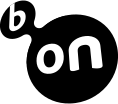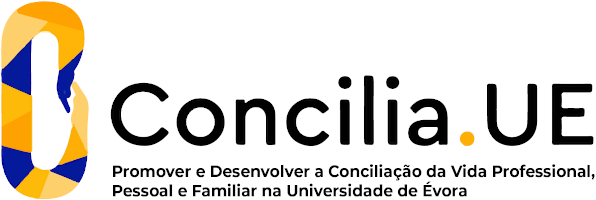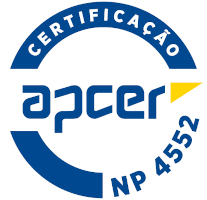2025
Motor Control and Learning
Name: Motor Control and Learning
Code: DES14945L
6 ECTS
Duration: 15 weeks/156 hours
Scientific Area:
Human Kinetics
Teaching languages: Portuguese
Languages of tutoring support: Portuguese
Regime de Frequência: Presencial
Sustainable Development Goals
Learning Goals
The intention is for students to acquire knowledge about:
1.Main Aspects of Adapted Physical Activity (APA)
2.Conceptualization of Disability and Functionality
3.Physical, Sensory, and Intellectual Disabilities Limitations and Functionality
4.National/International Organization of Sports for People with Disabilities
5.Functional Classification in Adapted Sports
6.Adaptation Models (e.g., STEP model) in APA
7.Adapted Sports for People with Disabilities
Regarding skills/competencies, the goal is for students to:
8.Be able to define, according to participants' interests and needs, strategies for inclusion in physical and sports activities.
9.Select and implement adaptations in various variables (e.g., equipment, rules, and instruction).
10.Master rules and specific skills of various adapted sports.
11.Be capable of identifying the main barriers to participation in movement programs and implement transformative measures to address this reality.
1.Main Aspects of Adapted Physical Activity (APA)
2.Conceptualization of Disability and Functionality
3.Physical, Sensory, and Intellectual Disabilities Limitations and Functionality
4.National/International Organization of Sports for People with Disabilities
5.Functional Classification in Adapted Sports
6.Adaptation Models (e.g., STEP model) in APA
7.Adapted Sports for People with Disabilities
Regarding skills/competencies, the goal is for students to:
8.Be able to define, according to participants' interests and needs, strategies for inclusion in physical and sports activities.
9.Select and implement adaptations in various variables (e.g., equipment, rules, and instruction).
10.Master rules and specific skills of various adapted sports.
11.Be capable of identifying the main barriers to participation in movement programs and implement transformative measures to address this reality.
Contents
1) Motor learning
Learning phases
Acquisition, retention and transfer
Relationship between motor control, learning and motor performance
2) Performance measures
Product and process variables
3) Theories and models of motor control
Closed- and open-loop (feedforward)
Scheme theory
Ecological approach
Dynamic systems
4) Neural bases of motor control
5) Proprioception and motor control
6) Visual perception and motor control
Vision for action and vision for perception
7) Classification of motor skills
8) Relationship between speed and accuracy
9) Neuropsychological functions
Attention
Memory
Executive Functions
Information processing speed
10) Promotion and organization of motor learning (and performance)
Practice organization methods (e.g., contextual interference, distributed practice, random practice)
Observational learning
Instruction and demonstration
Internal and external attentional focus
Implicit and explicit learning
Imagery and mental practice
Global and analytical practice
Learning phases
Acquisition, retention and transfer
Relationship between motor control, learning and motor performance
2) Performance measures
Product and process variables
3) Theories and models of motor control
Closed- and open-loop (feedforward)
Scheme theory
Ecological approach
Dynamic systems
4) Neural bases of motor control
5) Proprioception and motor control
6) Visual perception and motor control
Vision for action and vision for perception
7) Classification of motor skills
8) Relationship between speed and accuracy
9) Neuropsychological functions
Attention
Memory
Executive Functions
Information processing speed
10) Promotion and organization of motor learning (and performance)
Practice organization methods (e.g., contextual interference, distributed practice, random practice)
Observational learning
Instruction and demonstration
Internal and external attentional focus
Implicit and explicit learning
Imagery and mental practice
Global and analytical practice
Teaching Methods
Student-centered teaching model with active pedagogical strategies, making explicit the connections between the curriculum and its applicability to real-world problems. The following strategies are highlighted:
>Integration of expository moments and audiovisual resources that facilitate students' attention and active participation.
>Use of interactive digital resources, including the Moodle platform and collaborative software (e.g., Google Sheets and VideoAnt).
>Collaborative approach based on team-based learning methodology.
>Integration of teaching and research, promoting the dissemination of R&D projects and involving students in them.
>Classes include various application activities. Several activities encompass the preparation and implementation of "small" studies in the classroom, involving key phases of the scientific method: hypothesis formulation, experimentation (performing motor tasks and data collection), discussion of results, and conclusions.
>Integration of expository moments and audiovisual resources that facilitate students' attention and active participation.
>Use of interactive digital resources, including the Moodle platform and collaborative software (e.g., Google Sheets and VideoAnt).
>Collaborative approach based on team-based learning methodology.
>Integration of teaching and research, promoting the dissemination of R&D projects and involving students in them.
>Classes include various application activities. Several activities encompass the preparation and implementation of "small" studies in the classroom, involving key phases of the scientific method: hypothesis formulation, experimentation (performing motor tasks and data collection), discussion of results, and conclusions.
Assessment
2 tests (50%+50%) (continuous assessment)
or
Exam (regular exam / appeal exam)
The minimum grade is 9.5 points for both tests/exams and the project.
or
Exam (regular exam / appeal exam)
The minimum grade is 9.5 points for both tests/exams and the project.





















